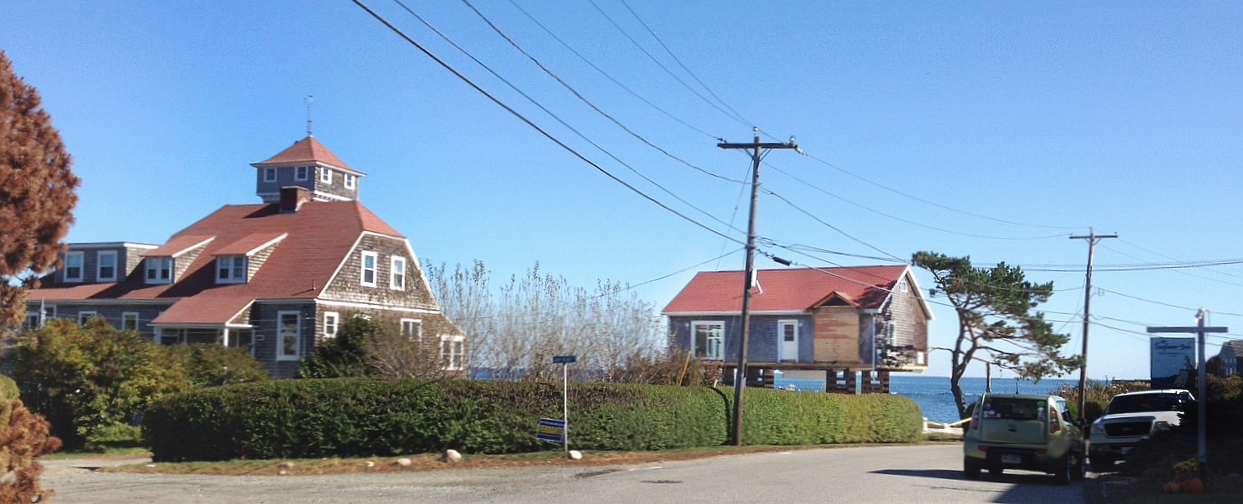Much has happened since we last wrote about a new house we designed on Gap Cove in Rockport, MA back in June. We’re happy to report that after a historically difficult 2015 winter the general contractor, Skinner and Watkins, recovered…
Building a Modern House on the Coast in the Age of Rising Tides
Building a custom house on the coast has become more treacherous in the era of rising sea levels. Firm principal, Will Ruhl, has been researching this subject intensely in conjunction with the design of his own house in Rockport, MA. Will has spent months studying the updated FEMA maps and regulations, discussing the project with building officials and the Conservation Commission, and coordinating between the structural engineer and contractor, all the while trying to turn these technical challenges into design opportunities.
From the beginning, his house presented a challenge because it is only 25 feet from a coastal bank that rolls into Gap Cove. The new FEMA flood insurance rate maps – made official by the Town of Rockport in July of 2014, six months after design had begun – raised the base flood elevations substantially, in Will and his family’s case by six feet which was well above the ground floor of the house. In addition, new building codes require all living spaces to maintain 24” of “freeboard” above that elevation! Not wanting to consign his well-built, if aesthetically underwhelming cottage to the waste-stream for the sake of meeting these requirements, Will realized the best solution was to lift the existing house off its current foundation, strip it to its framing and rebuild it, ensuring it will withstand the next 100-year storm. This will allow him to capitalize on the uninsurable space on the ground floor by transforming it into an open-air living space, which will flow onto the rocky beach beyond, and the added elevation will improve the views to Straitsmouth Island from his living room!
To accomplish this seemingly herculean task, Will worked with Matt Murphy of Admiral Building Movers, a firm that has been around for over 35 years and have moved everything from garden sheds to 500 person churches. Obviously they would be able to handle Will’s little cottage. First Matt and the general contractor, Kevin Watkins of Skinner and Watkins, had to ensure that the house could withstand being lifted twelve feet in the air. After reviewing the crawlspace framing it turned out the two halves of the building were never connected to each other. After Kevin and his crew bolted everything together, they severed all of the utility connections, and cut all of the anchor bolts that held the existing building to its concrete pier foundation. Amazingly, it took Matt and his partner only 6 hours to lift the house. Seeing the cottage standing on four skinny railroad tie legs is a surreal sight to behold!
With the house floating above, Kevin and his team will next pour new concrete piers underneath the building, and then gently set it down on its new foundation. There will be new “breakaway walls” between these piers in the new entry hall, that are designed to fall away if a storm surge should rush through the ground floor of Will’s house (god forbid!), but the rest of the house should stay high and dry. See below for photos of the lift, and stay tuned for the next steps!








